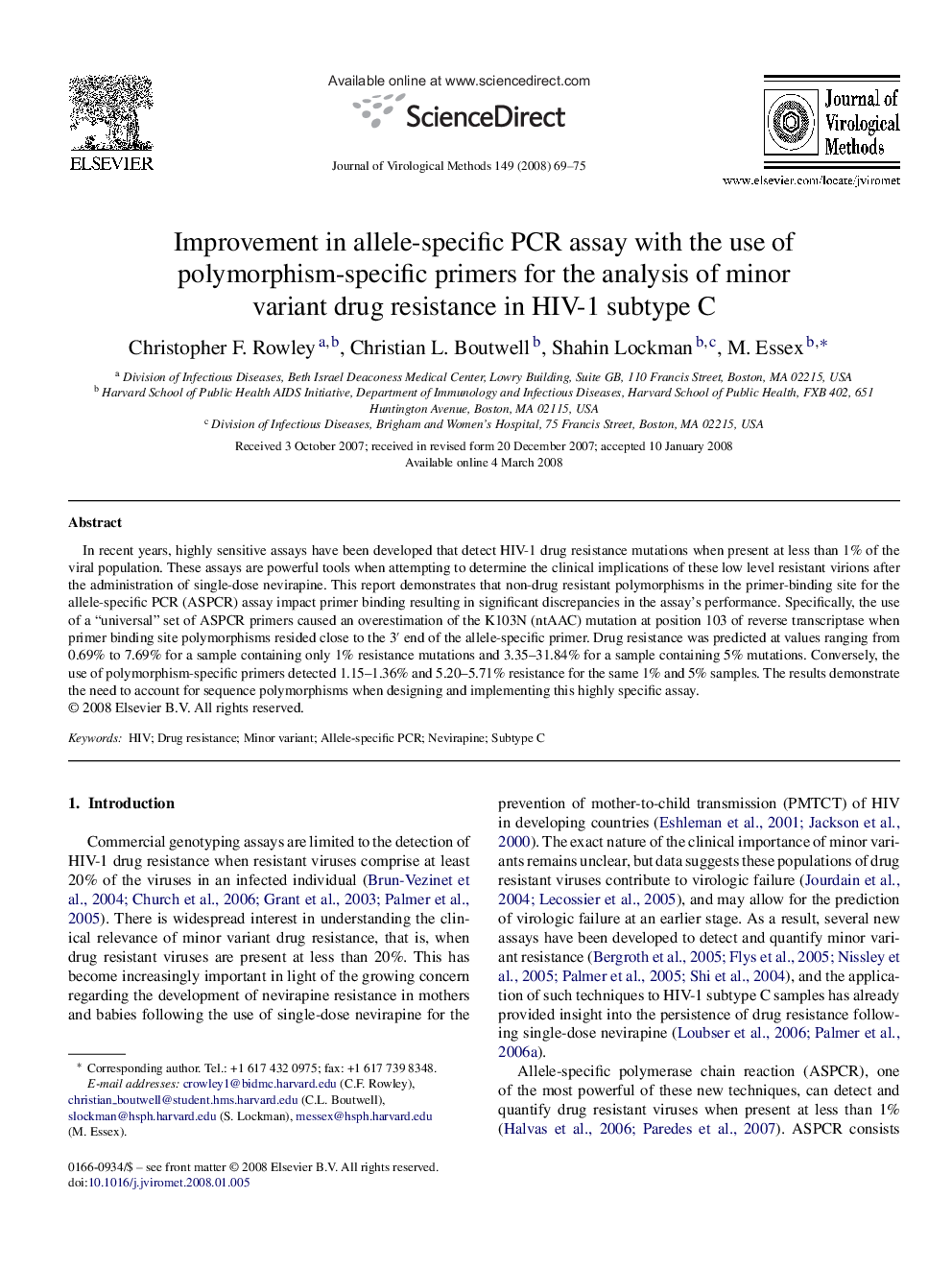| Article ID | Journal | Published Year | Pages | File Type |
|---|---|---|---|---|
| 3408141 | Journal of Virological Methods | 2008 | 7 Pages |
In recent years, highly sensitive assays have been developed that detect HIV-1 drug resistance mutations when present at less than 1% of the viral population. These assays are powerful tools when attempting to determine the clinical implications of these low level resistant virions after the administration of single-dose nevirapine. This report demonstrates that non-drug resistant polymorphisms in the primer-binding site for the allele-specific PCR (ASPCR) assay impact primer binding resulting in significant discrepancies in the assay's performance. Specifically, the use of a “universal” set of ASPCR primers caused an overestimation of the K103N (ntAAC) mutation at position 103 of reverse transcriptase when primer binding site polymorphisms resided close to the 3′ end of the allele-specific primer. Drug resistance was predicted at values ranging from 0.69% to 7.69% for a sample containing only 1% resistance mutations and 3.35–31.84% for a sample containing 5% mutations. Conversely, the use of polymorphism-specific primers detected 1.15–1.36% and 5.20–5.71% resistance for the same 1% and 5% samples. The results demonstrate the need to account for sequence polymorphisms when designing and implementing this highly specific assay.
